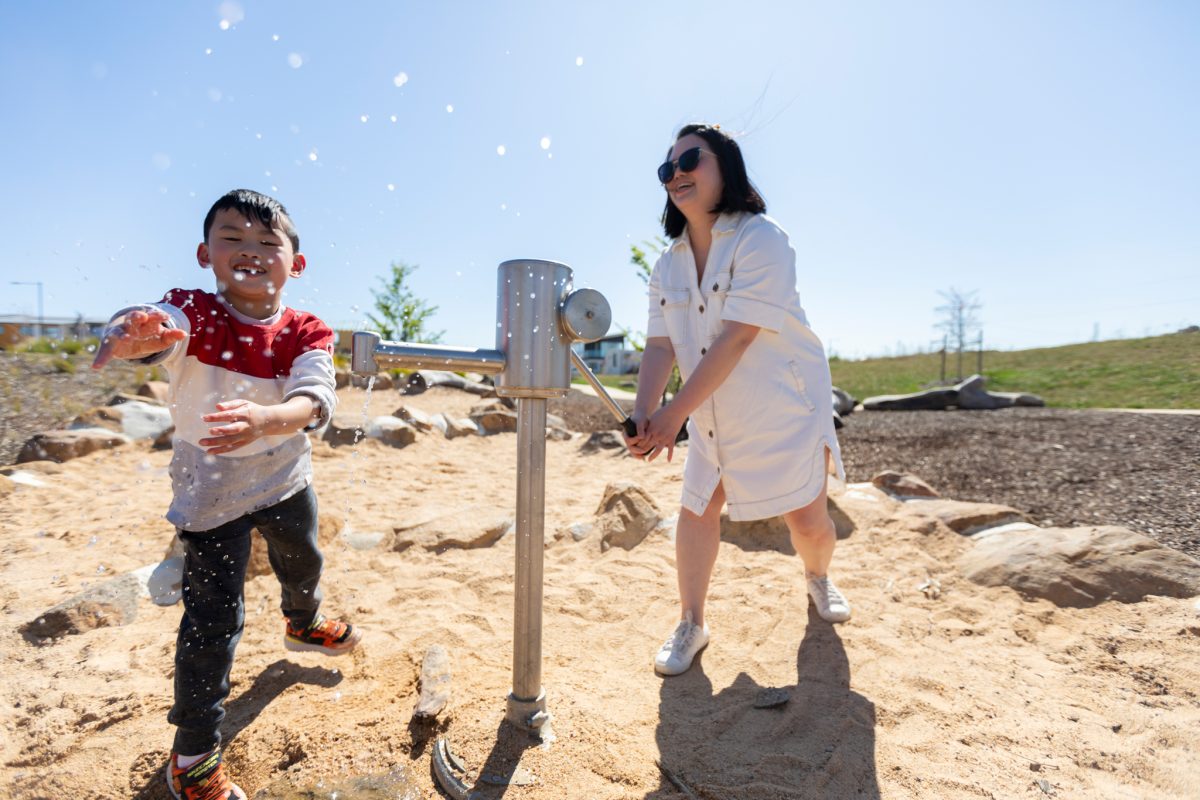Artist Profile: Liz Coats
Liz Coats has lived an extraordinary life as an artist. From growing up in Auckland, New Zealand, to working in Sydney and Melbourne during the Women’s Art Movement to completing residencies in both Beijing and Japan, Liz has made her mark in the world of art. It’s no surprise that she uses this life to feed her work, making it the main source of inspiration for her paintings.
Liz explores enduring questions about colour perception and spatial relations, transporting the viewer into colourful, intricate and abstract worlds influenced by the natural environment of colours and her lived experiences.
“I want to emphasise how research into the history of abstraction can be integrated with a woman’s experience of the living environment in the present time. I began working with layers of small brushstrokes in grid formations in the 1970s, with a focus on visually active colour relations, and this remains a central aim of my studies,” she says.
“I look for ways that the formation of a whole image is dependent on the placement of each colour mark and its spacing. From the beginning, I was not interested in figuration or drawing. I was looking to express colour relations as a direct experience.”
Exhibiting her paintings in Sydney and Melbourne in the 1970s, Liz’s work has been held in numerous public and private collections, including the Australian National Gallery, Art Gallery of New South Wales (where her glasswork, Returning G, is part of the new installation of 20th-century collections), National Gallery of Victoria, and the Auckland City Art Gallery. More recently, in 2017, paintings from all stages of her practice were shown in a large survey exhibition curated by Tony Oates at the Australian National University Drill Hall Gallery.
And now, decades after her career began, Liz is a Studio Holder at Strathnairn Arts Association.
Moving to Canberra in 2009 to research a doctorate on organic issues in abstract colour painting at the Australian National University School of Art, in 2019, Liz rented a small studio at Strathnairn Arts and quickly found inspiration in the new location
“I’ve landed in a place that really fits my way of working with colour. There’s a lovely organic environment at Strathnairn Arts that need protection,” she says.
While her paintings are intrinsically experimental – exploring geometry, texture, colour resonance, and more – her latest project sees her creating new abstract paintings with organic colours that she has personally distilled from sustainably cultivated plant and insect-sourced extracts.
“It’s partly a response to the environment – which of course is paramount, especially in the location of Ginninderry – and it’s partly a continuation of what I’ve always been thinking about: how we translate our bodily interactivity with colours as we see them into the colours of paint,” she says. “That’s been the big question for me all along…it’s taken me maybe two and a half years, where I’ve been learning to distil colour.”
“Rather than making paintings with organic pigments from scratch…I’m engaging with these new colours and surfaces in the context of my long-term understanding of abstract painting construction, and in the process finding new imagery.”
Drawing inspiration from the deep, healthy soil, indigenous bird and animal life as well as the old farmland where Strathnairn Arts is located in Ginninderry, Liz’s aim is to create thought-provoking art that is – in large part – organic in substance, and a response to the local environment. With these water-based organic pigments, whatever goes out into the ground is virtually neutral.
“Finding a PH balance to achieve the clearest colour with each pigment distillation is a finely calibrated process,” she says. “Each pigment preparation for painting has a quality and texture of its own, which I love…it’s the irregular outcomes in colour detail that I treasure.”
“These new paintings complement the way I’ve always worked with colour. I find organic colours in combination are more subtle in substance and perceptual harmony than the acrylic colours I have worked with and learnt from over many years.”
Using madder, cochineal, lac, weld and indigo, some earth ochres and more, she plans to continue researching and experimenting with potential in organic materials.
And from there, she continues to reach through worlds into one that exists without words to describe it – and then she paints it.
“Even from tiny babies we see colours, and then they start gradually becoming shapes, and then those shapes begin to join and become meaningful, and then we negotiate our body through them. That’s where all my work has come from, but it’s become complex,” says Liz.
“I want to share some of what my eyes have seen.”
To view Liz’s work, visit lizcoats.com.au


